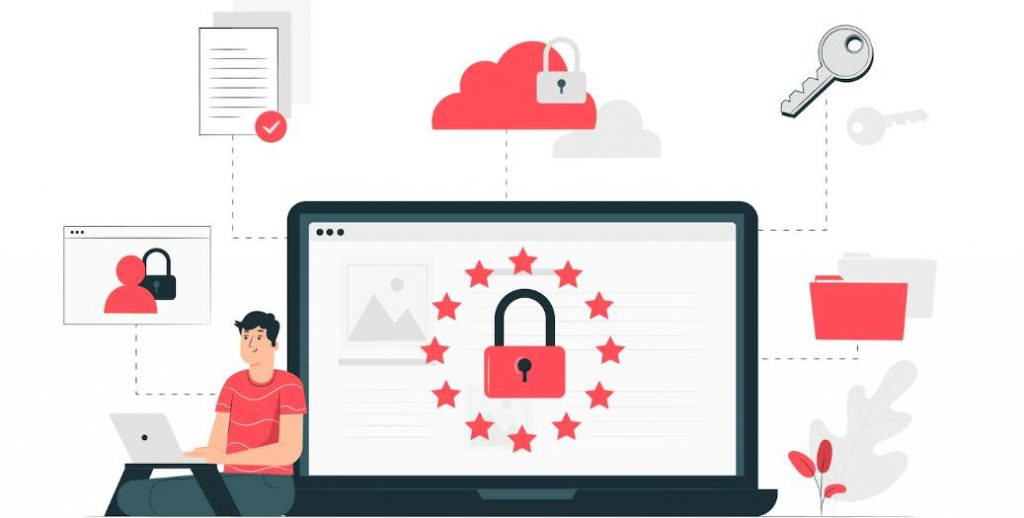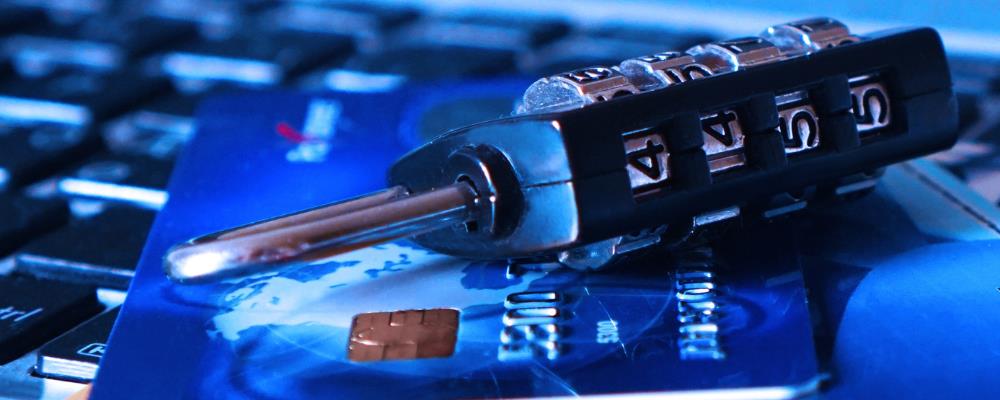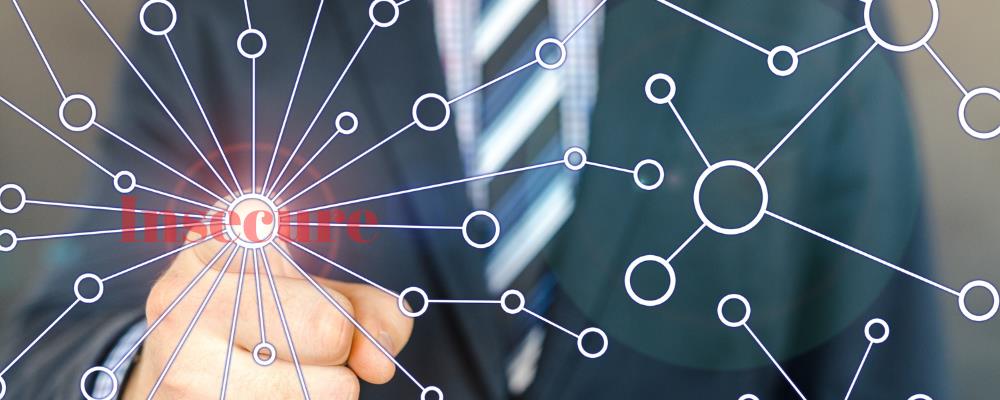Last Updated on December 15, 2023

Implementing an effective Mobile Device Management (MDM) Policy comes with many benefits for your organization in terms of device management, security, compliance, and productivity.
Without a specified MDM policy, you might lack direction in managing your devices, systems, and users. It can also become difficult for you to track users and devices in your network, find out whether they are secure or not, and implement security in your organization.
Therefore, organizations need to have a solid MDM policy to stay secure in this era of cybersecurity.
In this article, we will outline what MDM policy is, why it matters, and the best practices to implement MDM policy in your organization.
What is a Mobile Device Management Policy?
A mobile device management policy is a set of predefined rules to establish how users should securely use the assigned/approved mobile devices such as smartphones, laptops, tablets, and so on, within the organization.
Here, the users can be the organization’s employees, partners, part-time staff, contractors, and other authorized users accessing the company’s data. An MDM policy is implemented in an effort to secure data stored in mobile devices both from outside and inside threats.
Furthermore, an MDM policy includes different clauses governing the security, compliance, data inventory, and productivity of an organization’s assets and employees.
Key Benefits of Implementing an MDM Policy
Here are some of the key benefits of implementing an MDM policy in your organization.
Better Device Management
By implementing an effective MDM policy, you can better visualize all the mobile devices in use within your organization. This allows you to recognize devices and their users so that you can maintain a record.
As a result, you can engage in critical activities such as upgrading security updates and configuration on the devices as well as the software and applications installed on those devices. You can also manage your mobile devices remotely, which lets you manage users, restrict or disable access, reduce or increase permissions, and so on.
Ultimately, you will get better control of all the devices and manage them efficiently while keeping security in check. It will also ensure that no users can use unauthorized or vulnerable devices and compromise your organization’s security.
Data Security
Devices come with many applications and software systems that your employees, contractors, and other associates may use for operations. These systems contain crucial business information that you would not want to be leaked. If it does, you may lose your customers’ trust and business.

This is why securing applications and data is important for every organization.
Setting an MDM policy will enable you to frequently monitor your devices, update them, perform patches, and fix issues in them. It also facilitates running all the updates from a centralized point, which caters to compliance and government regulations while enhancing security.
Compliance
Compliance regulations have become more strict due to privacy risks and data theft instances occurring worldwide. Data protection laws such as Health Insurance Portability and Accountability Act of 1996 (HIPAA) and General Data Protection Regulation (GDPR), require you to protect your customers’ privacy and data.
With an MDM policy, you can manage devices and users as well as data effectively to protect your business and customers’ data.

Enhanced Efficiency
With no proper guidelines to manage mobile devices, it becomes difficult to track and manage all the devices and their users.
If something goes wrong, say during a cyberattack, you will not know how to handle it or limit the disruption caused by it. You will be busy tracking the root cause and then implementing your incident response strategy. Meanwhile, it could be too late to take remedial action and your data would have been exposed already.
However, if you implement a solid MDM policy in your organization, you would have the direction on how to proceed with your security strategy, starting with managing your devices and users. You would have the schedules to update and patch your applications on time, assign proper permissions, and visualize who is doing what.
This way, whenever something happens, you can easily track the root cause and implement your response strategy immediately. This will help you safeguard your systems and data or minimize the risks. Your employees will not be clueless about managing security, and their efficiency and productivity will also increase.
Best Practices for Implementing an Effective MDM Policy
Now, let’s look at some best practices for implementing an MDM policy in your organization.
- Strong Password Management
Passwords are used everywhere, be it your mobile phone, laptop, or business applications. Due to the increased use of many applications and devices, users might forget their passwords or use the same password everywhere to ease the process. They may also use weak passwords that are easy to guess, which makes them easy targets for hackers.

When implementing an MDM policy, be sure to focus on strong password management. For this, you can leverage techniques such as enabling two-factor authentication, setting limits for login sessions, using a reliable password management tool, among other effective strategies.
You must also encourage your employees to use stronger password combinations consisting of uppercase and lowercase letters, numbers, special characters, and a good length. In addition, guide them to change their passwords frequently to prevent password theft.
- Update Devices Regularly
Older versions of devices and applications are more prone to cyberattacks. The reason is software’s efficiency and stability degrades or it can become obsolete over time.
Technology is improving constantly and cyber attackers are using new and advanced strategies to hack into your systems to steal data. They also keep looking for vulnerabilities in applications and devices, and once they find it, they can easily leverage them and use it to conduct a full-blown attack.
Hence, updating your devices and applications is crucial. To ensure that you are updating all your systems on time, you can set a schedule for the updates and patches in your MDM policy.
- Don’t Connect to Insecure Networks
Public Wi-Fi or USB ports are not safe. The reason is public WiFi is open to all, including hackers who can conduct hacking attempts on other users using the same network. This can make your company’s data vulnerable to cyberattacks.
Similarly, USB ports are like a gateway to harmful code or malware that can put your data and system at a significant risk.

Hence, avoid connecting to insecure or unknown networks, especially if you are a business user. You must also direct your employees and business associates not to use public Wi-Fi.
Moreover, if you have a workforce working remotely, you can empower them with a VPN instead. It will provide you with a private, more secure network that you and your employees can access to perform your business operations. In addition, you can use cloud-based storage systems and avoid storing data on removable devices.
- Periodic Backups
If you store your crucial business data in just one system, it is possible that you may lose it to a malicious cyberattack or a life-threatening natural calamity.
Hence, you must store your corporate data at different, reliable places so that even if you lose it on one system, there will be another backup system storing the data. This way, you will not lose crucial information or have your operational workflow disrupted.
A good practice is to conduct periodic backups of your data from files, servers, and applications. You must also advise your employees to periodically backup data on a secure system or cloud to prevent losing it due to accidental deletion, cyberattacks, and other causes.
- Active Device Monitoring
Monitoring the devices and users in your network is necessary. The reason is security breaches can happen not only from outside but also inside. Organizations have suffered at the hands of their internal members who are found selling their data or compromising systems for their own benefit or vengeance.
Therefore, you must continuously monitor your devices, who is using them, and how much permission it has. You must also check whether the device is trying to exceed its permission level or conducting some suspicious activities. If so, you can quickly restrict the permission, and safeguard your data.

- Use Security Systems
Using security systems such as powerful anti-virus software, VPNs, firewalls, zero-trust security solutions, etc., can be an excellent way to build a strong MDM policy in your organization. These solutions will help you stay protected from malware, hacking, password theft, and other cybersecurity risks.
In addition, you can use safe login practices and identity access management (IAM) solutions to ensure only the right users have the right level of access to your data and systems.
- Allow Authorized Systems Only
Similar to the above point, you must allow only authorized devices in your organization’s network. No unknown devices must be given access as those may contain malware or a hacker might be trying to gain access through it. To stay ahead of cyberattackers, you can use technologies like 2FA, MFA, IAM, etc., for increased security.

- Report Lost Devices
If you spot some devices that are no longer to be found in your network or the user has resigned from your company, you must immediately report that device. If you do this and restrict permission for them, then the user will not be able to login to your applications and data. This helps prevent data theft risks.
- Awareness and Training
Last but not least, your MDM policy implementation will be stronger when you spread awareness in your organization about the need for applying an MDM policy. Explain to them the risks associated with having no defined policy to manage your mobile devices. In addition, guide them frequently and train them to follow the best practices of MDM policy implementation to enable organization-wide adoption.
In A Nutshell
A solid MDM policy in your organization allows you to safeguard your network, data, and systems with proper rules and guidelines that are applicable to all users in the organization.
So, if you want to stay protected and compliant and manage your devices effectively, create an effective MDM policy and see the benefits yourself.
Leave a Reply